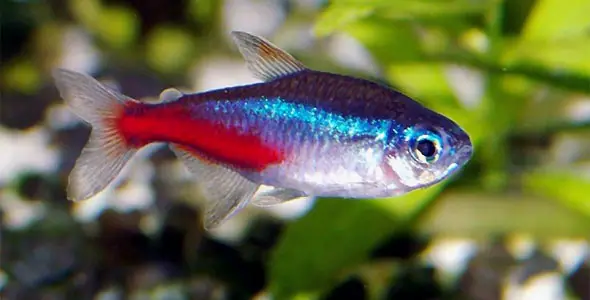Your fish may be the focal point of an aquarium, but aquarists know that there is more to a fish tank than the fish swimming around in it. The mark of a master is in the details and aquarium invertebrates are one of those details that even novice aquarists can look into and consider adding to their tank. Snails are an excellent starting point. When they are not on the move, their bright and colorful shells decorate your aquarium, bringing accents of color that otherwise may have been lacking. In addition, snails do double duty as aquarium cleaners. They will eat leftover food and algae, helping to reduce how often you have to clean out your tank.
Sub-Species for Aquariums:
Nerita – The Nerita snail has three common shell types: Olive, Tiger Blood, and Zebra. Olive Nerita have a solid green shell, like that of a new olive. Tiger Blood Nerita have an orange shell with elongated spots, while the Zebra Nerita has a brown and gold stripped shell that resembles a Zebra. This is a peaceful snail and does not have sudden explosions in reproduction that can put your tank at risk, especially as the larval stage requires a saltwater environment.
Assassin – The Assassin snail is a beneficial addition to a tank that has run afoul of snail over-population. While it will not bother fish and other tank invertebrates, it will quickly reduce an out-of-control snail population. It has a shell that is bright gold, banded in brown and elongated.
Gold Rabbit – With its long, black unicorn horn of a shell, the Gold Rabbit is a stunning snail. The snail itself is gold with a rabbit-like face and drooping antennae. It provides much entertainment (something interesting in a snail) because of its exaggerated shell length and deliberate movement. If you’re lucky, your Gold Rabbit may even reproduce, delivering perfectly formed baby snails.
Care:
Snails are generally quite hardy, able to handle a wide range of water temperatures and conditions. Often a temperature around 72˚F is perfect for them and a pH between 6.5-7.5 is ideal. Because they will ingest plant matter, you will want to be careful introducing them to a tank that is heavily aquascaped with live plants as they may be eaten. They do best in a tank with a soft substrate; the Assassin snail almost requires one as it prefers to bury itself in the sand and surprise its prey. Make sure that your fish will not eat the snails that you introduce to the tank!
Diet:
Snails prefer to eat debris, uneaten food, and algae. Assassin snails will also eat other snails. Keep an eye on the debris and detritus level of your tank. If your snails are too efficient in keeping things clean, you will want to supplement their diet with flake or pellet food; often the same things you are feeding your fish.
Size: Up to 3 Inches
Freshwater/ Saltwater: Freshwater
Diet: Omnivore
Reef Compatibility: NA
Tank Mate Compatibility: 10




